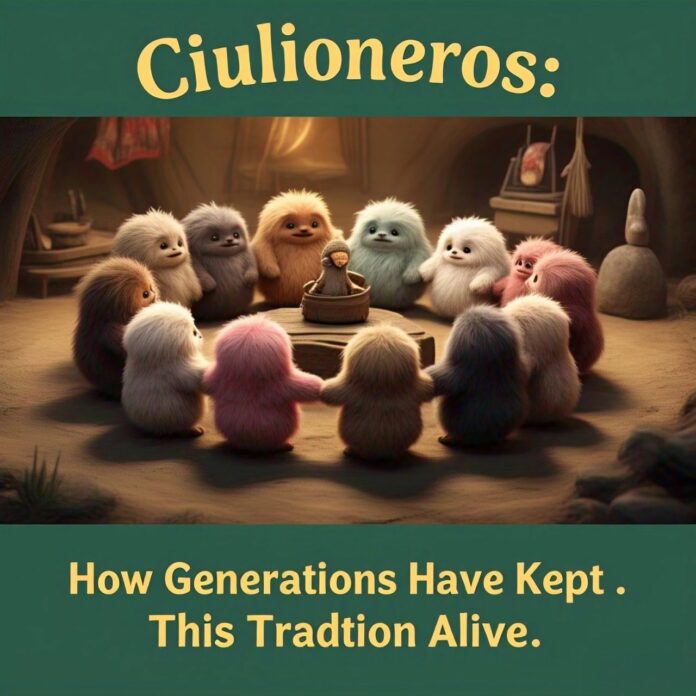The words Ciulioneros might not ring a bell for most people but it is something every local from a certain region would appreciate. This custom is very unique. We have witnessed it being practiced this way over the years, yet it has always held true to its form. In this piece, we are going to delve deep into the origins of the Ciulioneros, the role people have played in keeping this custom alive, and how it still remains relevant in contemporary times.
Defining Ciulioneros
Essentially Ciulioneros describes a community or group of people who have maintained some traditions that revolve around craft, art, and other forms of skilled activities. Although the traditions might differ from one area to another, this term generally depicts the strength and loyalty towards one’s culture to keep it alive.
The phrase “Ciulioneros” brings to mind complex imaginings of an artisan, a storyteller, a skilled engraver, a dancer, or a tormented musician. With decades of family teaching, the Ciulioneros have evolved with modern methods and tools while still retaining their distinct foundational principles.
The Ciulioneros Roots
The customs of the Ciulioneros date centuries back to when people still lived communally, self-sufficiently. In historic times, the Ciulioneros were largely rurally based people whose core function was to support their community’s economy through the procurement, production, and delivery of essential goods and services. As a result, and with scarce resources, they managed to handcraft community reflecting art, textiles, and food.
As traditional practices began to change, the process of industrialization started taking root. Mass production made makeshift Ciulioneros culture less accessible, risking its existence. Here, the dedication of the younger generations comes into play; the people of Ciulioneros refined their craft instead of letting it go.’
The Role of Family in the Tradition
As I have detailed, there is little to no consensus about the role of family in any society. It, however, happens to be one of the most unbelievable Ciulioneros traditions.
It becomes easier to grasp if you know the stubbornness that has defined Ciulioneros arts and crafts. Among the world’s greatest rudimentary skills at virtually every household set up, parenting is common. Thus, even at preschool age, Ciulioneros children are taught how to identify and define key skills, practices, and values that revolve around their crafts.
Children actively learn through engaging in family activities and over the course of daily life, helping in ‘bringing about’ the tradition. This way when woven borders fashioned of shredded textile with beautiful shades of red, green and blue, they do not only hear the stories but are shocked to find out what the previous generations actually looked like.
Ciulioneros and Modern Times
Although the practiced methods of Ciulioneros have not changed over the years, the way they are shared has adapted to the modern world. The internet and social media interfaces have enabled younger members to showcase their crafts, sell their products, and network with other like-minded people. What used to be a custom shared through physical interaction and community gatherings is now a global tradition.
Ciulioneros have benefited from modern technology, as it allows them to thrive in a world that values innovation and tradition. The need to balance keeping the culture alive and embracing new technology has improved the sustainability of the tradition in the long-term. Online marketplaces, social media pages, and “how-to” videos have made it easier for younger generations to showcase their work and network with other artisans around the globe.
The Cultural Significance of Ciulioneros
Ciulioneros is fundamentally about keeping a bow to a person’s roots. These traditions are their values at some level such as: hard work, creativity, environmental care, as well as family and heritage. These practices do not serve merely as utilitarian functions but rather as identity expressions. For the Ciulioneros community, every piece of work they weave tells them a story about their history, struggles, and triumphs through the eyes of a craftsman.
Through their practices, chiuloneros focus not only on the past, but ensuring the well being of the future generations. The maintaining of that tradition has fundamentally changed people’s perception for the culture. This is evident through the ongoing appreciation for handmade goods, regional craftsmanship, community welfare projects that have motivated people worldwide.
Issues That Ciulioneros Must Overcome
Like many other traditions, the Ciulioneros community has ran into a good share of challenges. The attention modern technology and mass-produced items grab often makes the younger generation shift their focus towards traditional practices. The economical good also has an impact on crafts and art for sure, particularly when asking at lower prices in comparison to other available goods.
Regardless, the spirit of Ciulioneros is kept alive and active by many people united in one cause. The years of collective struggle in communities strive to strengthen the framework through art in keeping the spirit alive while ensuring that those who require it have easy access to learning materials. The modern world provides easier approaches, but the value still stands strong.
How Every Generaton Has Helped in Preserving the Tradition
Every Ciulioneros has contributed to the tradition in one way or another, whether through calas creation, sharing their knowledge or adopting a different approach to teaching. For instance, long ago, Ciulioneros artisans were hand weaving tapestries and pottering, painstakingly passing down techniques over centuries. In modern times, these artisans can teach their techniques through online videos, enabling an entire generation to learn the craft.
Ciulioneros artisans have skillfully blended the use of old to new as they have come up with new designs, which are appealing to modern clients. This has ensured their survival in a changing world, and increased appreciation of artistry and craftsmanship.
Conclusion
The distinct tradition of the Ciulioneros has withstood the test of time due to the pride and resilience of the community along with the dedication of every succeeding generation to the cultural legacy. The Ciulioneros cultivate their roots and values through family teachings, modern technology, and strong connections to their traditions, thus ensuring their cultural practices are passed down for decades to come. The survival and growth of this practice highlights the impact and flexibility of traditions in the present and future of a community.
FAQs
1. What does “Ciulioneros” mean?
Ciulioneros refers to a community or group of people skilled in and preserving rural traditional crafts, art, and all folk practices each generation passes down to the other.
2. How long has the Ciulioneros tradition been around?
This tradition traces back to rural communities decades ago where the Ciulioneros relied on handmade goods and services to support their daily activities.
3. How do families keep the Ciulioneros tradition alive?
People within this community have developed the custom of teaching their young ones through practical engagement and storytelling alongside participation in local initiatives.
4. In what ways have technical advancements affected the Ciulioneros community?
The Ciulioneros have been able to market and sell their products all over the world through modern technology like social media, and at the same time, hold on to their traditional ways.
5. What do you think are the greatest challenges for the Ciulioneros today?
Ciulioneros face the challenges of economic competition, the appeal of inexpensive, mass-produced items, and the difficulty of maintaining interest in traditional culture and practices among the youth.
6. Why do you think Cuilloneros is important for the preservation of culture?
Ciulonieros helps to maintain cultural identity by fostering creativity, family, and hard work, and ensures that all traditions are kept alive in today’s society.


